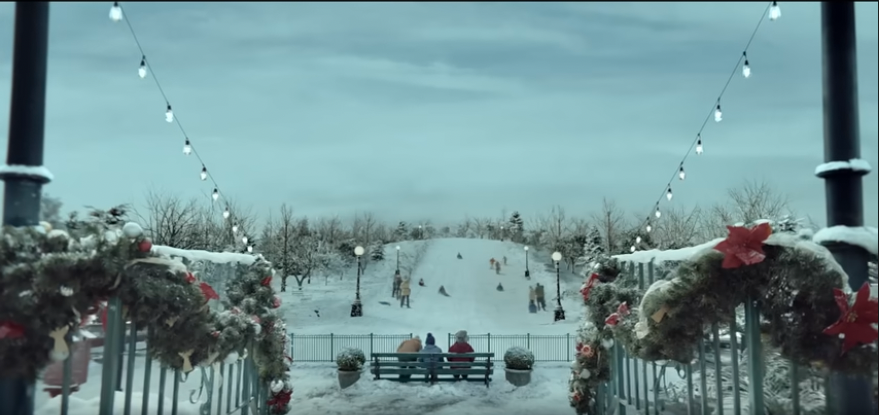Season’s Greetings!
Are you ready to have some fun?
If you saw yesterday’s email, you know that I recently encountered an emotionally captivating, 60-second video that exemplifies all the essential elements of any live, written or recorded story.
And based on the many email responses I received, many of you agreed – and, just like I was, were brought to both tears and joy when they watched it.
So for the next four days I’m going to reveal those essential elements, and how they will make your own stories more emotionally impactful and financially successful. I’ll be sharing the principles for writing a great story, which you must do before you can present it to audiences or readers.
So watch the video with me as I begin with the SETUP:
:00 The opening shot shows us a snow-covered hill with people sledding in the distance, and the backs of three people sitting down to watch the action. Lights and evergreen garlands draped on some fencing establish it’s Christmastime.
Open your story by vividly describing or showing your readers and audiences where it takes place. You want to use specific details (not generalizations) to transport people from the world they occupy into the world you’ve created.
Even when telling your story live, include these details. Tell us about the snow, the sledders, and the Christmas decor. By creating a “movie” in their minds in this way, you allow us to participate in the action subconsciously, rather than just observe it.
:02 [When an entire story takes place in just 60 seconds, the scenes and turning points will change very quickly.] We now see that the three people on the bench are all elderly women settling in for a while (they’re bundled up, drinking coffee, and one brought a newspaper). Then we see a close up of the tallest of the three, looking at her two companions, then smiling enigmatically towards the hill in front of her.
You want to establish the hero of your story as soon as possible; show her living her everyday life before she begins pursuing her goal in the story; and create empathy with that character as soon as possible.
This woman is the first one singled out from the group, her height, appearance and demeanor make her seem more robust, that she’s sitting together silently and planning to be there a while implies that she’s friends with them, and while her friends watch the children sledding, this person is watching them. It’s easy to infer that she feels sorry for them.
This is all designed to create empathy with her, because of her likeability (caring about the other two), and because of whatever sympathy we might feel because of her (and her friends’) age.
One other element you want to introduce, however subtly, into the setup is a sense that your hero is stuck – in a state of inertia, usually tolerating a situation rather than taking action to change it. In this case, all three women are the
picture of passivity as we see them observing all the sledding activity in front of them. (We’ll go deeper into this element in a couple days, when we look at the hero’s Inner Journey
:12 Our hero looks at her friends as they watch the kids sledding, then gazes back into the distance.
This VERY quick moment serves as the OPPORTUNITY of the story. It’s the new event that will move the hero of the story to take action.
We’re not immediately aware of the shift, but as a storyteller, you must know what crisis or tipping point moved your hero into a new situation that would transform him from passive to proactive.
This opportunity will always lead the hero to ask herself how she will respond to the new world she has entered. She will usually get help in the form of a guide or sidekick, and finally establish a clear goal that will lead to the finish line of the story.
In “Joy Ride” we discover that the hero had already experienced this. But as we watch this 4-second sequence, it’s presented as a surprise, to satisfy the emotional needs of an opportunity.
As she looks at her phone and we get a very quick glimpse of a non-descript Amazon page, she is about to declare her goal and begin her PURSUIT – the next stage of the story. And that’s where we’ll pick things up in my next email.
– Michael







